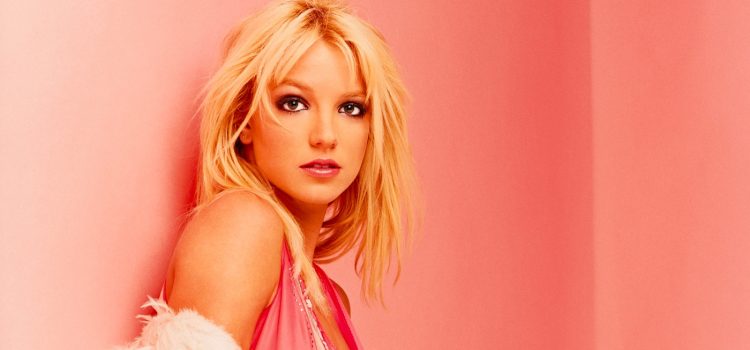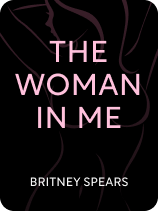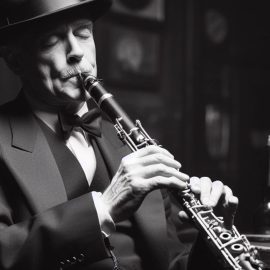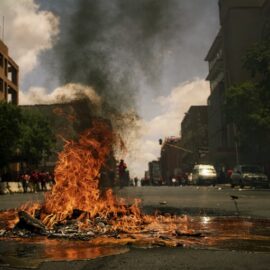

This article is an excerpt from the Shortform book guide to "The Woman in Me" by Britney Spears. Shortform has the world's best summaries and analyses of books you should be reading.
Like this article? Sign up for a free trial here.
What’s the timeline of Britney Spears’ key events in her life? How did she go from a small-town girl to the biggest pop star in the world?
Spears’s life story includes sadness and success. But despite the depth of her darkest moments, she insists the bad times don’t diminish the happiness she’s found through her music and raising her children.
Let’s follow Britney Spears’s timeline through several key periods of change in her life.
From Childhood to Stardom (1981-1998)
The only way to kick off Britney Spears’s timeline of her life is right at the start. Spears was born on December 12, 1981, to parents whose marriage was already rough due to her father’s drinking. Spears writes that ever since she can remember, music was an escape from her problems at home, and singing was the only way she could safely express herself. Spears discusses how her singing and dance career began, her early appearances on TV while trying to live a normal life at home, and the break that led to her first hit single and her sudden rise to international fame.
Spears was singing and dancing before an audience at the age of three, and by the age of five, she was winning dance competitions in her home state of Louisiana. When she wasn’t performing, Spears spent a lot of time hiding from her family. Her father’s construction business was failing due to his alcoholism, and her mother answered his growing abuse with vicious tirades of her own, all of which young Britney had to hear.
Music was the bright spot in Spears’s life, and when she was eight years old, she auditioned for a reboot of The Mickey Mouse Club. Though Spears didn’t win a part on the show, the head of casting recommended an agent in New York, who agreed to represent her.
For Spears to get into the music industry, she and her mother decided that she’d audition as a solo act rather than joining a musical group as some of her peers had done. At 15, Spears signed her first record deal, left home with a family friend who’d be her adult chaperone, and moved to New York to record her first album. Spears recalls that filming her first music video was one of the peak creative moments of her life. Despite still being an unknown, much of her artistic input was incorporated into the final product. The song “…Baby One More Time” and the album of the same title both debuted at #1 on the charts, the first time a female performer achieved both at the same time. Overnight, at the age of 16, Spears became a household name.
Living in the Limelight (1999-2003)
The tremendous success at the start of her career swept Spears into a world she could have never imagined and kicked off a period of creativity and excitement. Thrust into the spotlight, she rubbed shoulders with celebrities of whom she’d always been in awe. Between recording albums and going on tour, a host of new opportunities arose, such as commercials, acting roles, and even a spot in the 2001 Super Bowl halftime show. With the income from her music, she was able to provide for her family, building the house that her mother always wanted and digging her father out of his business debts. Spears says that she was also maturing as an artist, and her 2001 Dream Within a Dream tour was staged and choreographed to highlight that fact with top-of-the-line production and design.
Romance and Heartbreak
This period of her life also brought difficulties, however. In 1999, Spears toured with her childhood co-star Timberlake, who’d become a member of the pop group NSYNC, and became romantically involved with him. The couple lived together in Orlando, Florida, and though their relationship wasn’t spotless, Spears felt so strongly for Timberlake that she overlooked his various affairs. Spears states that she only cheated on him once and that she told him about it so they could move on. When Spears became pregnant with their child, Timberlake pushed her to have an abortion, insisting that they were too young to be parents. To keep her pregnancy and abortion secret, Spears didn’t go to a doctor, but took pills to force a painful miscarriage.
Spears writes that left to herself, she wouldn’t have ended her pregnancy, but she did so for Timberlake’s sake. Nevertheless, he ended their relationship in 2002, breaking up with her via text message while she was filming a music video. Timberlake would go on to write a solo album painting Spears as a horrible girlfriend who broke his heart.
During her breakup with Timberlake, Spears had no one to turn to—she didn’t feel allowed to drop her confident pop star image and had no forum to tell her side of the story. As she had during dark times as a child, Spears chose to hide—first by going home to Louisiana, and later by retreating to an apartment in New York.
Turmoil and Unwanted Attention (2003-2007)
The next few years brought some moments of joy amid a deluge of problems that spiraled out of Spears’s control. As she felt the media turning against her, Spears sought fulfillment in creating a family, only to have what she loved used against her. Spears details the media backlash that followed her breakup with Timberlake, her marriage to aspiring rapper Kevin Federline, and the fallout from their messy divorce.
The media was sympathetic to Timberlake as he promoted his take on his relationship with Spears, but it wasn’t supportive of her side of the story. She recounts an incident in which her father and three men she didn’t know barged into her home and interrogated her about the breakup. Following that came a TV interview in which journalist Diane Sawyer publicly grilled her about how she’d treated Timberlake, seemingly accepting his version of events as fact and pushing Spears to break down on camera. In what Spears asserts should have been a time for healing and grief, she was forced to expose her most private feelings in an open forum for everyone to see.
After these events and a grueling tour, Spears became involved with a former backup dancer, Kevin Federline, who Spears says treated her with a tenderness that had been missing in her life. She didn’t learn until after they were dating that he had children from a prior relationship. Nevertheless, she married Federline in 2004 and tried to restore some normalcy to her life by taking a break from recording and touring.
Spears hoped the tabloid press would give her some distance, but instead, their efforts to hound her ramped up when she had her first son in 2005. Three months later, she was pregnant again, and the paparazzi became even more persistent.
Spears Versus Federline
Spears feels that she ignored the warning signs that Federline was pushing her away. She supported his ambition as an aspiring rapper, but once he started recording his album, he refused to see her. After their second son was born, Spears tried to find comfort in raising her children, but, although she didn’t realize it at the time, she was experiencing postpartum depression. Because of Federline’s extended absence and the never-ending pressure from the paparazzi, Spears had no consistent emotional support. Her only escape was the recording studio, where she produced her album Blackout, one of her favorites to this day.
With her marriage seemingly doomed, Spears’s attorney advised her to file for divorce before Federline did. Supposedly, this would spare her the humiliation of being publicly dumped for a second time. According to Spears, this was a mistake. Once again, the media painted Spears as the villain for splitting up a young family. Federline told the press that Spears was an unfit mother as they both sued for custody of their children. The media put everything Spears did under a microscope without giving Federline the same treatment.
In an act of rebellion, Spears shaved her head, throwing away her “good girl” image, a choice that the tabloids pounced on. She tried using wigs to go incognito, but photographers followed her every step, even as Federline refused to let her see her children. Feeling the weight of all these pressures, Spears’s composure in public began to slip. She describes an incident when a photographer provoked her and she attacked his car with an umbrella, giving the press the reaction they wanted. After this, her parents forced her into rehab for substance abuse (possibly for overusing her prescription Adderall, though Spears doesn’t specify). She insists her problem wasn’t substance abuse—her problem was not being allowed to work through her depression and grief like a normal human being.
Stolen Years (2008-2015)
As difficult as Spears’s divorce from Federline was, it was nothing compared to what was to come. Spears’s father took advantage of her erratic behavior and her frayed emotional state to assume complete control of her life in the form of a legal conservatorship. Spears goes into the steps that were used to entrap her, the restrictive conditions she lived under for years, and the lengths her father went to assert his dominance over his daughter.
In 2008, during one of the times when Spears was allowed to be with her sons, she became so afraid she wouldn’t see them again that she locked herself in the bathroom with her youngest child. Spears writes that in response, a team of policemen broke down her door, restrained her, and sent her to a hospital for observation. Her parents showed no concern at the time.
Spears admits that she would vent her anger and cover up her sadness by acting out, partying, and taking Adderall, but her parents didn’t take an interest in her problems until she started dating someone they didn’t like. It was then that they swooped in and took away her freedom.
Spears recalls that her mother asked her to come home, warning her that the police were after her. Spears couldn’t imagine what she might have done to warrant a police investigation, but when she arrived at her home, a group of policemen took her into custody like a violent criminal and carted her to another hospital for observation. Spears believes this event was orchestrated by her father and an entertainment management firm to which he was in debt.
The Conservatorship Begins
On February 1, 2008, the California court placed Spears in a conservatorship on the grounds that she was incompetent to make her own decisions. Spears’s father—an alcoholic who was teetering on bankruptcy—was granted control of Spears’s personal life and her entire financial estate. Spears was forced to accept a court-appointed attorney and was given no chance to defend herself. During this, her mother stayed silent and complicit; after all, the whole family depended on Spears for their income. Spears’s father made it clear, in no uncertain terms, that she would do whatever he said without question.
Spears’s father and his management team went about isolating Spears from any personal relationships she might develop. If she went to see friends, a security detail went with her to monitor everything she did. If she wanted to date someone, her manager would divulge to the person all the details of Spears’s private life. Spears argues that this entire arrangement was purposely designed to cut off her support and make her dependent on her father, but she felt so defeated at this point that she went along with every stipulation. As a reward, she was allowed to see her children so long as she kept to her father’s rules.
Performing on Demand
One of the things Spears’s father required was that she go on tour and make appearances on TV. Spears draws attention to the contradiction of claiming that someone’s too sick to make decisions but is healthy enough to learn dance routines, endure an exhausting tour schedule, and present herself well in front of the camera. On tour, she pretended to be an adult on stage, but once her shows were over, she was treated like a heavily chaperoned child. Spears wasn’t even allowed to decide what she ate. When one of her hairdressers commented on Spears’s insane schedule, they were fired the next day. No one was allowed to question Spears’s father.
When a deal came along in 2013 for Spears to do a multi-year residency in Las Vegas, her fans were welcoming, and her show attracted a younger audience than Vegas usually receives. However, Spears’s enjoyment wouldn’t last. She writes that her boyfriend at the time gave her over-the-counter energy pills that greatly improved her performance on stage, but her father, who had control of her body, sent her into rehab, even though the supplements were legal and available to anyone. In a 2014 bid to break free from her father, she pleaded with the court to test him for drug and alcohol use, but her request was summarily denied.
Spears’s Las Vegas concert series sold nearly a million tickets during its run, enriching her father, her management company, and anyone else connected to the “Britney Spears industry.” Spears states that while others were profiting from her work, she was only given an allowance of $2,000 per week, which she could only spend with her father’s permission. As the end of the Vegas residency approached, she pleaded for time off to spend with her children, but instead, her father and managers ordered that she start touring again right away. Her father promised that if she refused, he would humiliate her in court for breaching the terms of her conservancy.
The Fight of Her Life (2016-2021)
For Spears to win back control of her life would require more courage than anything she’d done. Her years chafing under the conservatorship had strengthened her in ways she hadn’t been before, but challenging her father’s authority would result in a retaliation that would almost prove unbearable. Spears talks about how she began to assert herself, how her father responded by sending her to rehab on trumped-up allegations of mental instability, and how she finally found the legal help she needed to end her father’s abuse of his power.
In 2016, Spears recorded a new album, Glory. Through the process, she rediscovered her love for making music, as well as her joy in performing. Spears felt her self-confidence growing, which she hid from her father at first. While filming the video for the song “Slumber Party,” Spears met her future husband, Hesam Asghari, but when they discussed starting a family together, Spears’s father refused to let her stop birth control. Asserting herself, Spears pushed for new songs to be added to her concerts, but her father refused every request. Tired of her father’s excessive restrictions, Spears writes that she actively started to rebel.
In October 2018, Spears publicly rebuked her father and her managers by refusing to speak at an event to announce an extension to her Vegas residency. However, she says the spark that ignited her father’s fiercest retaliation against her was during a later practice session, when she simply said “no” to a difficult dance move one of her choreographers suggested. Spears’s father and management team’s response to her asserting herself was extreme. They accused her again of “energy supplement abuse,” had a psychologist declare her mentally unfit, and in January 2019 they sent her to a rehab facility where she’d be locked away for months.
Trauma in Rehab
Though Spears had been in rehab clinics before, this experience was worse than any she’d gone through. All of Spears’s privacy and autonomy was stripped away. She writes that she was under constant observation, even when bathing or changing her clothes. Doctors physically examined her daily, repeatedly drawing her blood and forcing her to take lithium, which slowed her mind and skewed her sense of time. During her first two months in the clinic, she had no contact with anyone who wasn’t in power over her. Though she begged to be released, Spears’s father could have stopped her treatment and simply chose not to. He wanted to punish her instead.
When reflecting on how she survived her ordeal, Spears insists that she was only able to pull through because God gave her the strength. A sympathetic nurse made Spears aware of the #FreeBritney movement that began when fans suspected she was being kept somewhere against her wishes. Knowing about her fans’ concern buoyed Spears until her release in April 2019. Her family behaved like everything was back to normal, but months later, Spears learned that her father had physically assaulted one of her children. Despite her exhaustion, Spears knew she had to take control of her life back, for her own sake and for her sons.
Breaking Free
Spears reached out to her fans through social media—first, to show she was alive, and then to let people see her as a person and not an entertainment property. The Covid pandemic gave her a respite during which she focused on self-improvement work and strengthening her relationship with God. She insistently called her court-appointed attorney to work toward ending her conservatorship, but her lawyer provided little assistance. Left with no other recourse, on June 22, 2021, Spears called the police to report that she was being abused.
On the following day, Spears made a statement to the court that was broadcast online for all to hear. In it, she described the conditions she’d lived under and her prior efforts to end her conservatorship. Learning that she’d been lied to about her rights to a private attorney, Spears hired a new lawyer who devised a two-step plan—first, to petition for her father’s removal as conservator, and then to end the conservatorship altogether. In September 2021, the court stripped Spears’s father of control of her life. In November, the conservatorship ended completely, and Spears received the news that after 13 years, she was a free woman again.

———End of Preview———
Like what you just read? Read the rest of the world's best book summary and analysis of Britney Spears's "The Woman in Me" at Shortform.
Here's what you'll find in our full The Woman in Me summary:
- The key takeaways of Britney Spears' memoir about her career and private life
- How the media's portrayal of Spears differed from her experiences
- How the music industry treats women differently than men






